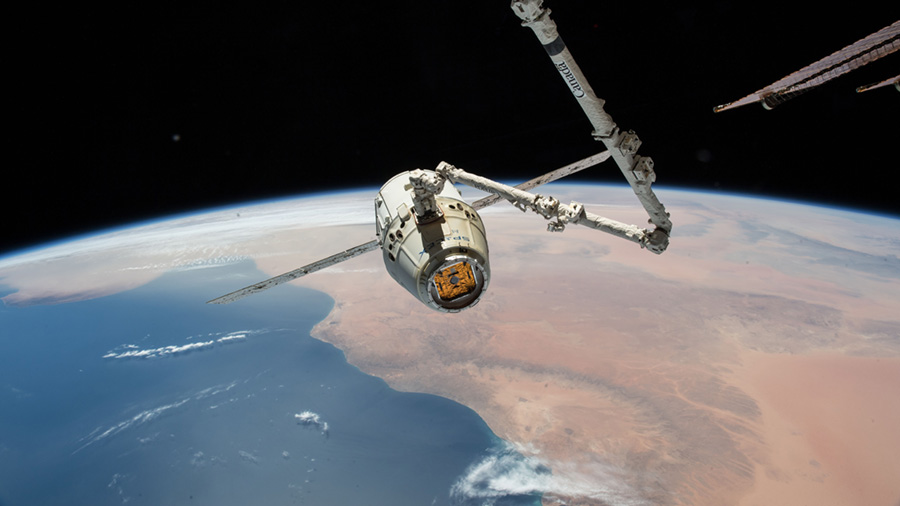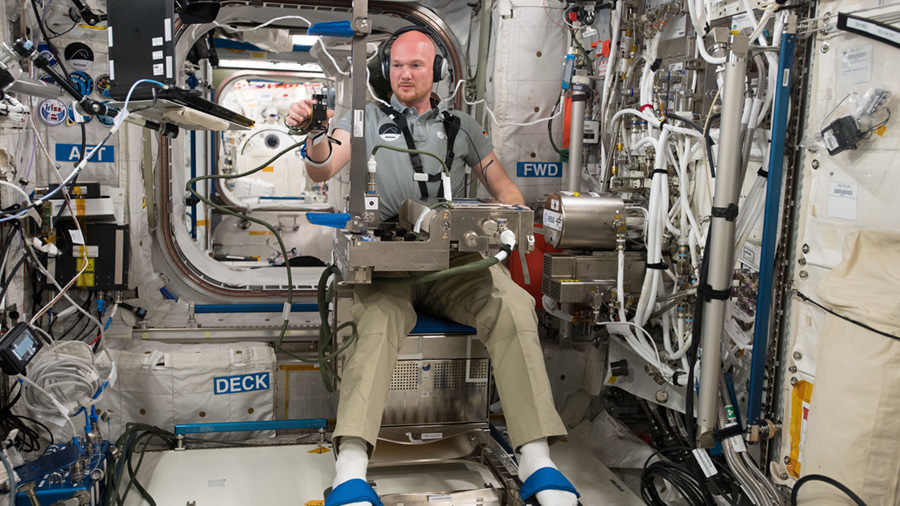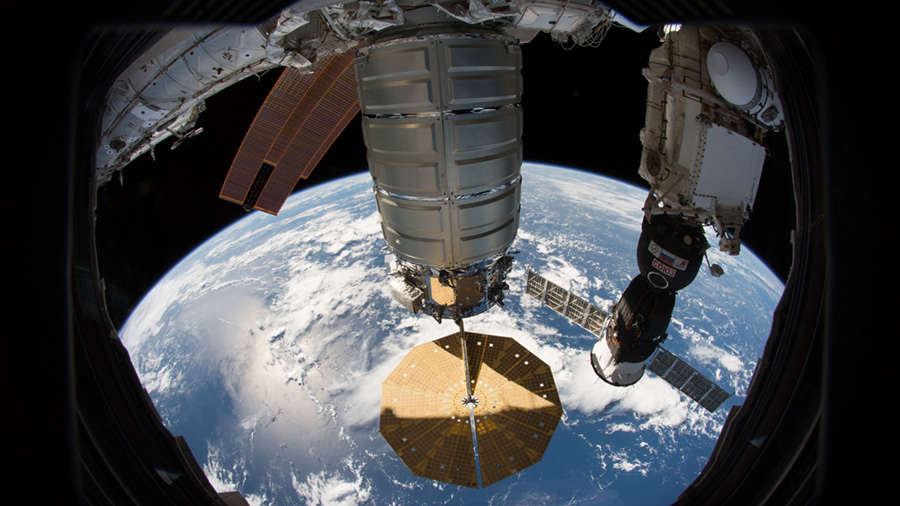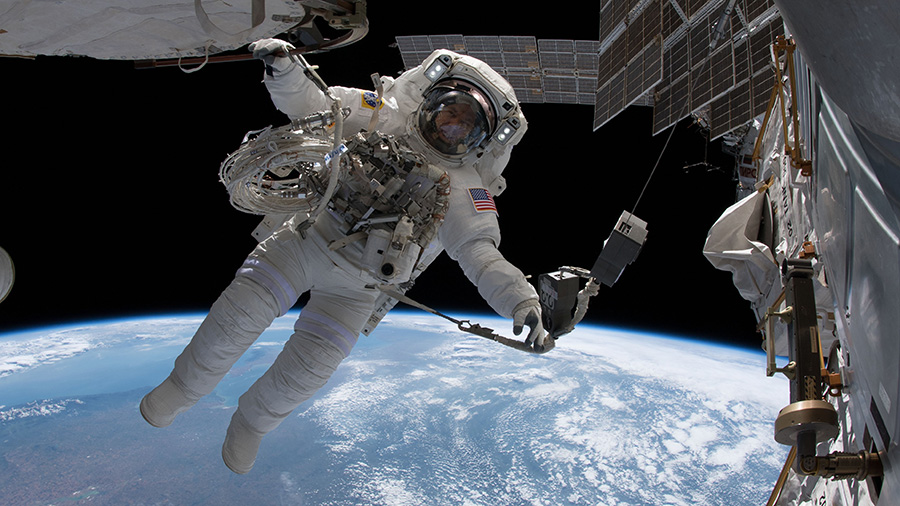Crew Gets Ready for Dragon, Studies Space Impacts on Health and Physics

The Expedition 56 crew members are getting ready for the arrival next week of the 15th SpaceX Dragon mission to the International Space Station. The space residents also explored how microgravity impacts health and physics today while setting up a variety of cubesats for deployment.
The Falcon 9 rocket from SpaceX that will launch the Dragon space freighter into Earth orbit is due to lift off Friday at 5:41 a.m. EDT and take a three-day trip to the orbital laboratory. The commercial space freighter will be loaded with almost six thousand pounds of new science experiments, crew supplies and space station hardware.
NASA astronaut Ricky Arnold will be backed up by Commander Drew Feustel in the Cupola when he commands the Canadarm2 to grapple Dragon Monday at 7 a.m. The duo is reviewing procedures and training on a computer this week for the rendezvous and capture activities. Robotics controllers on the ground will then take over after the capture and remotely install Dragon a couple of hours later to the Harmony module where it will remain for 32 days. NASA TV will broadcast live the Dragon science briefings, launch, capture and installation activities.
Feustel started the workweek collecting and stowing biological samples for the Multi-Omics study that is observing how gut microbes may affect an astronaut’s immune system. He then worked on the Atomization experiment that is researching liquid spray processes to potentially improve the design of jet and rocket engines.
NASA astronaut Serena Auñón-Chancellor installed a cubesat deployer on a multi-purpose experiment platform that will soon be placed outside the Japanese Kibo laboratory module. It will deploy nine different cubesats to continue space research and demonstrate space applications.
Get The Details…
Mark Garcia
ISS
Powered by WPeMatico







